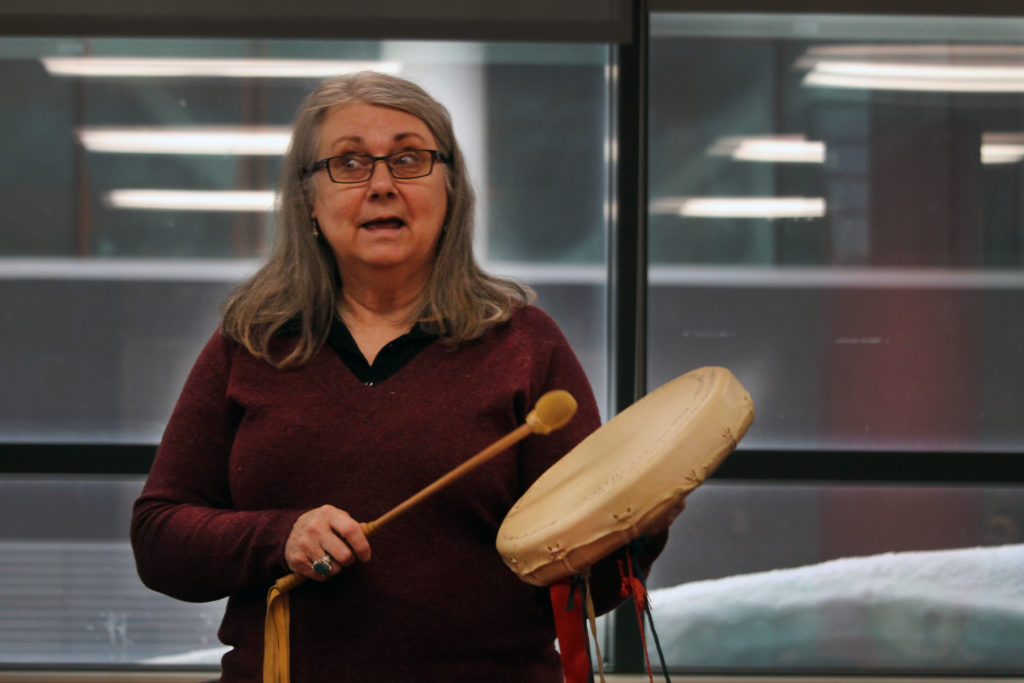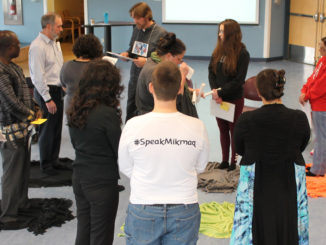Drumming session started a conversation on identity and the mixing of Indigenous cultures in Canada.
Jasmine Burt
Kicker

In a small room in the university centre of Memorial University, a red cloth pops out against the murky grey carpet. An abalone shell is filled with smoking herbs, hide-wrapped rattles and several different hide-wrapped drums.
The collection of items is Marie Eastman’s altar, a representation of her identity. Eastman is a knowledge keeper from the Qalipu Nation.
The use of the drum by Mi’kmaq people, she says, is a result of a “pan-indigenous culture” that has formed in the country.
“Non-indigenous people tend to have a propensity to group all of our cultures and the things we do culturally together,” said Eastman.
She says if someone identifies as Indigenous, no matter where they’re from, there’s pressure to know about smudging and drumming. Smudging is a way of purification using traditional herbs and resins.
Eastman adopted drumming into her own practices after finding strength in it.
“Historically speaking, we didn’t use those types of drums,” said Eastman.
Instead, she says, they used two things as musical instruments: The jiqmaqn, a split-ash rattle that’s hit against the leg or hand, and a thick piece of birch bark that would be placed over a hole dug in the ground and was beaten very similarly to a drum.
Eastman says people should respect that the drum is now part of their teaching culture.
“The drum affords us the possibility of teaching through our songs,” said Eastman. “Which is what our ancestors did.”
Eastman said the drum has allowed her a way to communicate with others and helped in the search of her identity.
“That’s what music and singing does. It transforms you. It can bring you from now to 10 years ago,” she said.
The drumming circle was a part of the Aboriginal Resource Office and the school of social work visiting Aboriginal elder’s pilot project.
Tama Fost was one of the people who joined the drumming circle. She is an Indigenous student success coordinator with the Aboriginal Resource Office and says the project is something they hope will eventually lead to an elder-in-residence on campus.
“Students would be able to access an elder’s knowledge, insight, expertise, and support, so that they can attain their culture in a relevant way on campus,” said Fost.




Be the first to comment